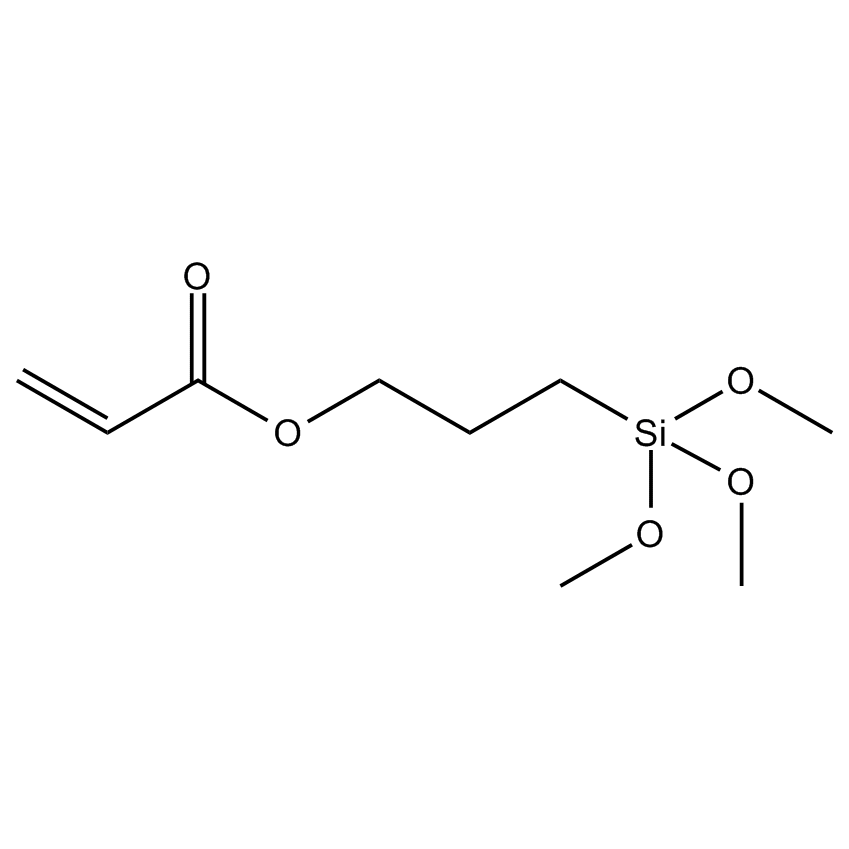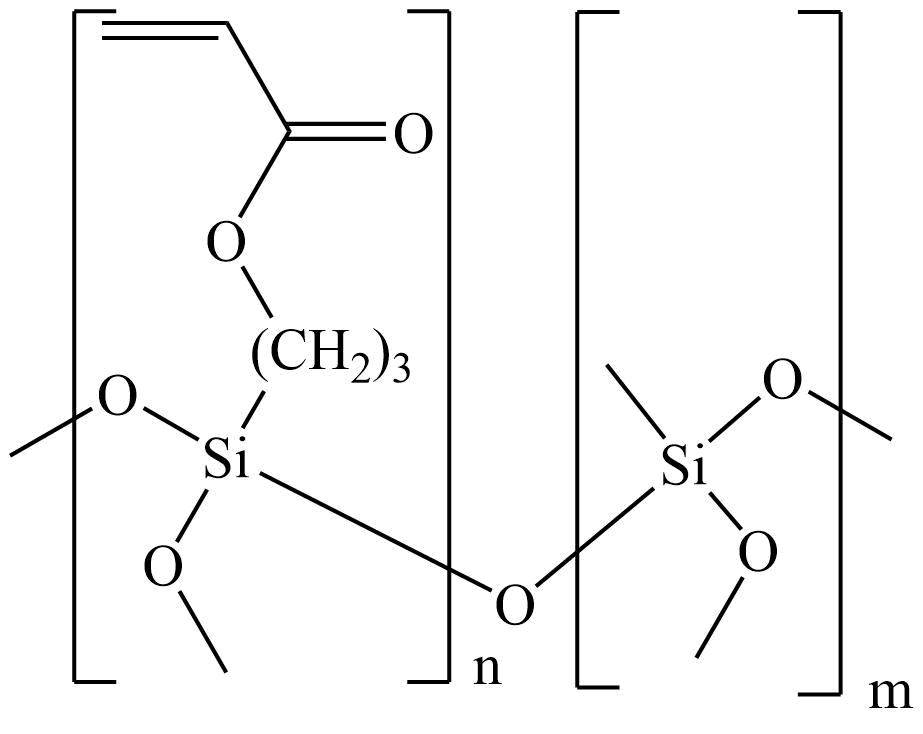Additional Properties
- Einecs Number 419-560-6
- HMIS 3-1-1-X
- Molecular Formula C9H18O5Si
- Molecular Weight (g/mol) 234.32
- Purity (%) 96%
- TSCA Yes
- Boiling Point (˚C/mmHg) 68/0.4
- Density (g/mL) 1.06
- Flash Point (˚C) 123 °C
- Refractive Index @ 20˚C 1.4155
Application
Employed in optical fiber coatings.1
In combination with dipodal silane, SIB1833.0, increases strength and hydrolytic stability of dental composites.2
Reference
1. Yokoshima, M. et al. Chem. Abstr. 113, 15746d; Jap. Pat. 02133338, 1990.
2. Matinlinna, J. et al. Acta Odontol. Scand. 2012, 70, 405.
Safety
Acrylate Functional Trialkoxy Silane
Silane coupling agents have the ability to form a durable bond between organic and inorganic materials to generate desired heterogeneous environments or to incorporate the bulk properties of different phases into a uniform composite structure. The general formula has two classes of functionality. The hydrolyzable group forms stable condensation products with siliceous surfaces and other oxides such as those of aluminum, zirconium, tin, titanium, and nickel. The organofunctional group alters the wetting or adhesion characteristics of the substrate, utilizes the substrate to catalyze chemical transformations at the heterogeneous interface, orders the interfacial region, or modifies its partition characteristics, and significantly effects the covalent bond between organic and inorganic materials.
3-Acryloxypropyltrimethoxysilane, 3-(trimethoxysilyl)propyl acrylate





